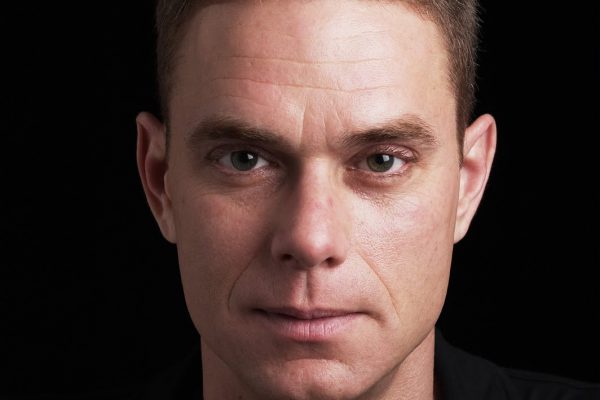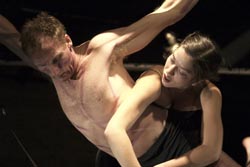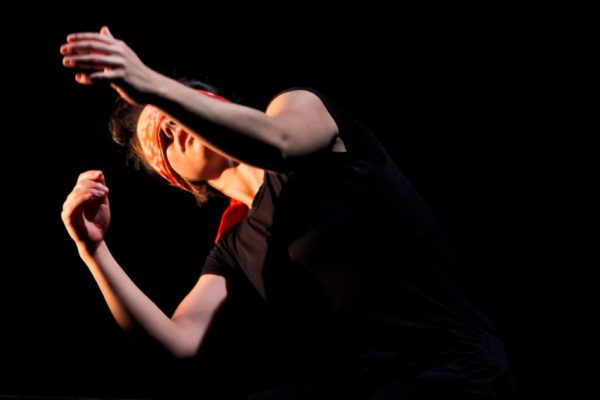Deep in the heart of Winnipeg’s historic Exchange District is the cre8ery, an art gallery and performance space fuelled by imagination and creativity. It also quite fittingly became incubator for the world premiere of local contemporary dance artist Tanja Faylene Woloshen’s Holy Wild, a surrealistic walk on the wild side inspired by nature and siren calls to freedom.
Holy Wild had its genesis in the Young Lungs Dance Exchange Research Series in 2014, with the two independent artists mentored by local theatre artist Tom Soares. Woloshen subsequently travelled to the remote northern town of Churchill, Manitoba, to further shape the work as part of a Manitoba Arts Council Residency Program in 2015. Both Winnipeg-based dancers have deep roots in the local arts community, with McMillan a former company member with Winnipeg’s Contemporary Dancers (2007-14) where she performed works by Sasha Ivanochko, Susie Burpee, Serge Bennathan, Brent Lott and Rachel Browne, among others, following her graduation from the Professional Program of the School of Contemporary Dancers in 2007.
Woloshen once trained at the Royal Winnipeg Ballet School, as well as at the University of Calgary and Vancouver’s Main Dance, before pursuing further theatre studies at the University of Winnipeg and University of British Columbia Okanagan. The interdisciplinary dance artist has also intensively studied Japanese butoh over the years, including a certification in Sapporo, Japan, last fall. Traces of this sublime movement form are visible in her creative sensibility.
As equal parts dance installation and live performance, the forty-five-minute production unfolds as a series of structured improvisations. It begins with Woloshen stepping into the white box theatre like a curious Harlequin, dressed in her own costume design of diamond-patterned pants and shirt, topped by a sparkly tuque and orange pompom. Following her is McMillan, a seeming compatriot with her clownish baggy pants and loose jacket that covers her real-life pregnancy, further heightening Woloshen’s buffo persona.
The pair take their respective places in the divided halves of the intimate stage area flanked by the audience, amid Woloshen’s set design of four suspended, skewed window frames, stacked stones, orange toy wagon and a “distressed” wooden chair. I felt we had entered a secret funhouse — a place of magic and mystery where anything can happen.
And it (mostly) did — albeit the dancers’ often hyper-controlled, sustained movement and the production’s overall slow pace admittedly took some adjustment. A pastiche score featuring music by Laurie Anderson, Airto, David Lang and Sylvain Lemêtre proved effective and countered the show’s quieter moments with strategic sections of driving percussion, electronica and voiceovers (ironically) intoning “I lose control.”
At certain points, the duo play counterpoint to each other like two sides of a coin: Woloshen’s fluid choreography juxtaposed with McMillan’s almost robotic walking, her muscles taut with tension right down to her fingertips. At other times, the latter begins to tremble violently as though electric shocks are passing throughout her body, while Woloshen calmly lies on the floor, her pliable back arched into a crescent.
Conversely, Woloshen also twists her body into distorted shapes, her arms suggesting gnarled branches on a tree while McMillan simply removes her jacket like shedding a carapace. This singular — and literal — moment of self-revelation suddenly infused the entire show with emotional vulnerability and made me hungry for more. I also wondered if their respective characters — the buttoned-down McMillan and playful Woloshen represented ego and id; this potential idea tantalized with intriguing new layers of interpretation.
The show’s climax comes as Woloshen begins slamming rocks into the floor, while McMillan simultaneously pulls tiny gilded plastic animals from her deep pants pockets, lining up, or “taming,” a bear, cougar and several cows into silent procession. When she places its leading rhino on its side, she creates another fascinating mini-narrative of loss and honour, where her tiny kingdom of beasts, now in rank file, appear to “march” as though a funeral cortège for their fallen hero.
Another dramatic moment is when Woloshen suddenly bursts out running on the spot, her arms wildly flailing that suggests an escape from the self. As her pace quickens, her panting for air becomes more pronounced, before she breaks into a wide grin and silent laughter that only rings hollow.
This show succeeds best by creating a potent series of stream-of-consciousness images. However, at times it also felt overly cryptic and I longed for greater physical and emotional connection between the two dancers, who are otherwise caught in their respective worlds. I felt this would have created a more resonant emotional arc in the loosely based narrative, with the whole becoming greater than the sum of its parts.
Holy Wild ends not with a bang but a quiet whimper that further underscores its Beckett-styled, Godot flavour. As McMillan surveys her created kingdom, Woloshen begins to tug at her wagon, finally lowering her white-painted face into its cargo of earth. Woman and nature finally become one under dimming lights, a holy benediction to a world filled with its own cryptic mystery.
Tagged: Contemporary, MB




